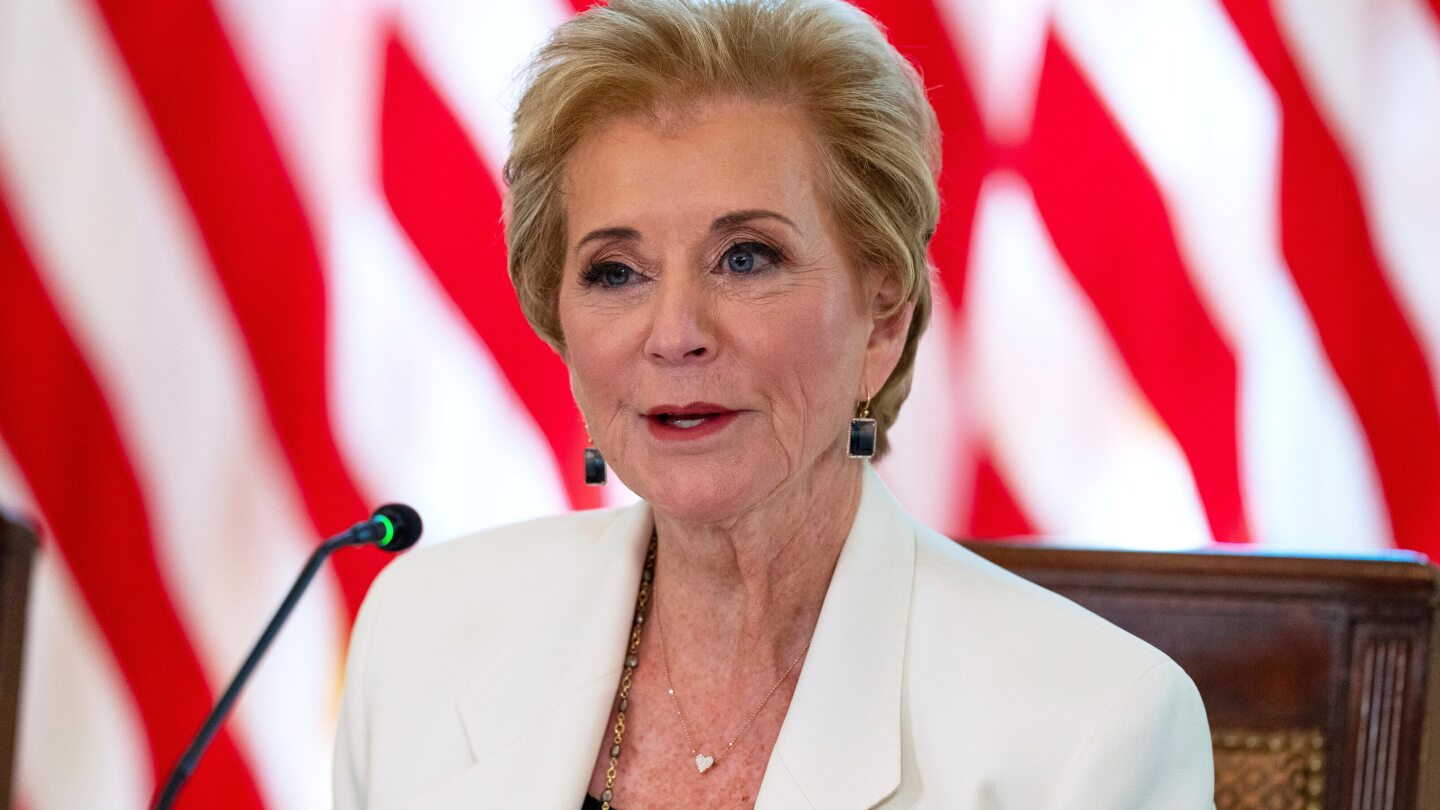WASHINGTON (AP) — The government shutdown has been a source of anxiety for school leaders wondering how long grant money will last and who can help them interpret federal laws. For Education Secretary Linda McMahon, it offers a preview of what she hopes to make permanent.
Much of the department’s work has gone completely cold. No new grants are being awarded, and civil rights investigations have been halted. Money is still flowing for key programs, but in many respects, schools and states are on their own.
That’s the vision President Donald Trump has promoted since his presidential campaign — a world where states fully have the reins of education policy with little or no influence from the federal government.
Even before the shutdown, mass layoffs had left the agency with 2,400 employees, down from 4,100 when Trump took office. Remaining workers have mostly been furloughed during the budget impasse, leaving some 330 who are responsible for carrying out duties that are deemed essential.
In a recent social media post, McMahon said the shutdown proves her department is unnecessary. “Two weeks in, millions of American students are still going to school, teachers are getting paid, and schools are operating as normal,” McMahon wrote.
She offered a more direct assessment days later, after the agency hit its 46th year: “We don’t need a birthday cake,” she wrote. “We need an eviction notice.”
Some say the shutdown’s impact has been more significant. They warn that funding for preschool centers and school meals is running out, and students with disabilities might not be getting the help they need.
Here’s what we know about the impact so far.
Schools mostly have the money they need — for now
Most of the billions of dollars the Education Department steers to schools each year went out the door in October, leaving schools funded until July.
Other programs that aren’t funded in advance face more uncertainty. That includes federally funded Head Start preschool centers and school nutrition programs funded by the U.S. Department of Agriculture, said Julia Martin, director of policy and government affairs at the Bruman Group, an education law firm.
Districts are required to cover the cost of school meals and then seek reimbursement from the Department of Agriculture, but the agency said it only has two months of reimbursements left amid the shutdown.
“Districts are really worried that they’re going to have to dig deep into their pockets to fund meals,” Martin said.
The last remnants of federal COVID-19 aid are still being released by the Education Department, but reimbursements have slowed with fewer staff reviewing the requests, Martin said.
America’s public schools are primarily funded by states and cities, but federal funding plays an important role. The billions sent already to schools include grants to help low-income students, those with disabilities and other populations.
Grant competitions to award smaller amounts of money have largely frozen. Schools and states that already received grants can keep spending them down, but all new grantmaking has ceased, the department said. At the college level, federal Pell grants for low-income students are still flowing, and the FAFSA financial aid form is still being processed.
With the government shuttered, schools look elsewhere for a help desk
Ordinarily, states and schools rely on the department to answer questions on a wide range of topics — from special education laws to statewide academic assessments to laws requiring public schools to provide certain services to students at private schools.
That work, known as technical assistance, has halted during the shutdown, and the Trump administration has moved to eliminate it almost entirely. A new round of layoffs this month targeted most workers in the Office of Elementary and Secondary Education.
Also gutted was the Office of Special Education and Rehabilitative Services, which ensures that students with disabilities get the services they’re entitled to under federal law. It maintains “very regular” communication with states to field questions on coordinating aid to families and eliminating waitlists, said Katy Neas, CEO of The Arc of the United States, a disability rights group.
The new layoffs have been halted by a federal judge. But as the shutdown drags on, more states are likely to break federal laws unknowingly because they can’t get help from the government, said Neas, who led the special education office under former President Joe Biden.
“People of good intention and good faith are going to have honest questions that they’re not going to be able to get an answer for,” Neas said.
Some states have turned instead to law firms for advice, but there are not always clear answers. In August, the department rescinded 2015 guidance explaining schools’ legal obligations to students who are learning English. But with no new guidance replacing it before the government shutdown, schools have questions about their responsibilities, said Martin, of the Bruman law firm.
“In the meantime, a lot of districts are just going to continue to follow the old guidance because it’s the best thing they have,” Martin said.
What’s next for the department?
McMahon has acknowledged that only Congress can fully eliminate the Education Department, despite Trump’s campaign pledge to shut it down. As a workaround, officials have been developing plans to transfer core functions to other agencies.
The Education Department already moved some of its adult and career education programs to the Labor Department in July. The Labor Department now oversees federal Perkins grants, which go to states to fund career and technical education.
In court filings, the Education Department has said it was pursuing a similar deal to put the Treasury Department in control of the $1.6 trillion federal student loan portfolio.
The Supreme Court paved the way for that work to continue in a July decision overturning a lower court order blocking the department’s wind-down.
At her Senate confirmation hearing, McMahon also said special education programs might fit under the Department of Health and Human Services, and that the Education Department’s Office for Civil Rights could be moved to the Justice Department.
___
The Associated Press’ education coverage receives financial support from multiple private foundations. AP is solely responsible for all content. Find AP’s standards for working with philanthropies, a list of supporters and funded coverage areas at AP.org.
First Appeared on
Source link













